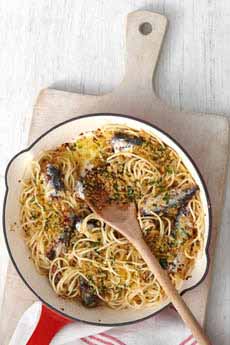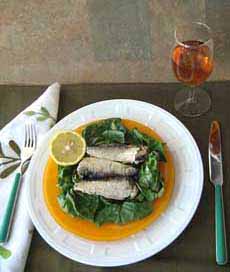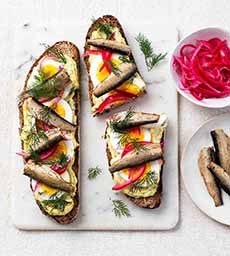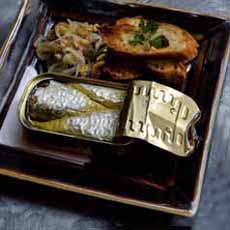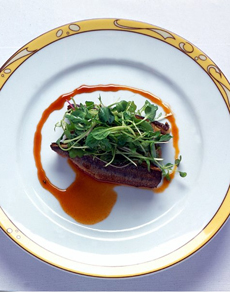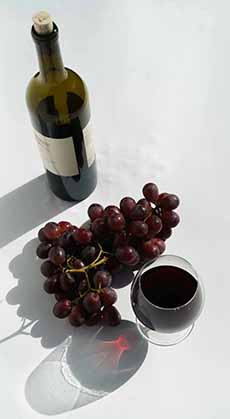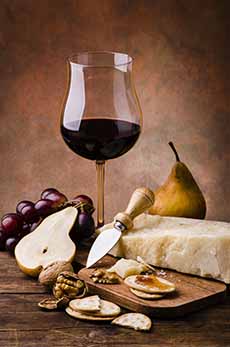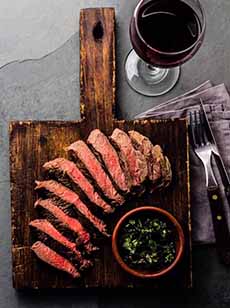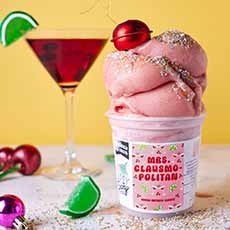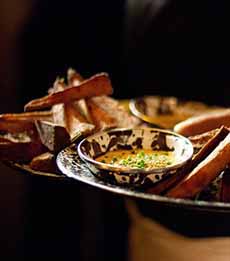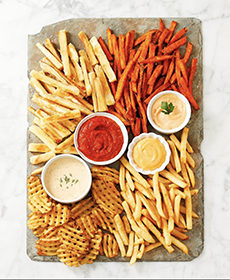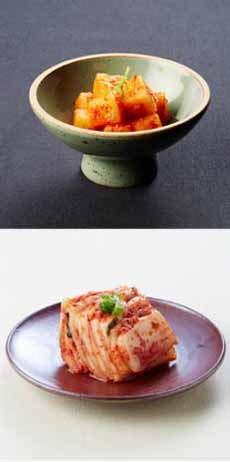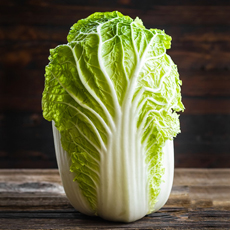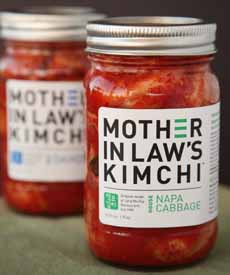|
Why don’t more cheese makers make chocolate goat cheese? It is a splendid indulgence, a more dense version of chocolate cheesecake.
Since we had our first bite of Capri Chocolate Goat Cheese Log, we were hooked. (You can buy it from the producer, Westfield Farms, or from iGourmet or
An entry from France, La Bonne Vie Chocolate Chip Goat Cheese Log, is available from Instacart and other retailers, but you might as well roll your own: a plain goat of goat cheese in mini chocolate chips.
Thanks to Vermont Creamery for adding Chocolate and Cherry dessert goat cheese log to its first two sweet flavors, Honey Truffle and Strawberry Spritz.
The goat cheese is blended with cocoa powder and dried tart cherries before being rolled in tiny semi-sweet chocolate chips.
Says the Creamery: “Channeling the depth and decadence of a Black Forest cake and boasting a ridiculously rich fudge-like texture, Chocolate and Cherry is…ready to be eaten on its own, any old time and just because.”
Say we: “Enjoying an inch-wide slice of the chocolate log, with or without a graham cracker or other cookie, is far more prudent than devouring a whole slice of chocolate cheesecake.”
Yes, it’s a dessert, a snack, a chocolate fix, all rolled into one 4-ounce, heavenly delicious log.
Among other fine food chains, Chocolate Cherry Goat Cheese is available at Albertsons and Whole Foods Markets.
Here’s a store locator.
> The history of chocolate.
> The history of cheese.
> The different types of cheese: a glossary.
> The history of goats is below.
HOW TO SERVE CHOCOLATE GOAT CHEESE
Serve slices of chocolate goat cheese on a platter, board, or individual plates, with:
Fresh and/or dried cherries
Chocolate bark, breakup or squares
Cookies: cantucci (small biscotti), graham crackers, ladyfingers, sablés (sandies), spice/gingersnap cookies, stroopwafels
Strawberries
Another nice presentation is to include a slice of log and a cookie on a mixed dessert plate with a macaron, meringue, tartlet, etc.
THE HISTORY OF GOATS
The history of goats is intertwined with the history of human civilization. Domestication of goats is believed to have occurred more than 10,000 years ago in the Fertile Crescent*, making them one of the earliest domesticated animals.
Prehistoric mankind recognized the utility of goats for providing milk, meat, hides, and fiber (cashmere and mohair). Archaeological evidence suggests that goats were domesticated in the Zagros Mountains of Iran and Iraq around 10,000 to 11,000 years ago.
The practice of goat domestication then spread to Africa, Asia, and Europe. Goats adapted well to diverse climates and landscapes, making them valuable for various agricultural and pastoral communities.
Goats played a crucial role in early agriculture. They were prized for their ability to graze on a variety of vegetation, including grasses and shrubs that other livestock might avoid. Their adaptability allowed them to thrive in different environments.
Goats are now found all over the world, having adapted to a wide range of climates and ecosystems. They are kept for various purposes, including subsistence farming, commercial agriculture, and even as pets.
Over time, different breeds of goats have been developed for specific traits such as milk production, meat quality, or adaptation to certain climates. Examples include the Alpine, LaMancha, Nubian, and Saanen breeds known for their milk production; and the Boer, Kalahari Red, and Spanish breeds which are raised primarily for meat.
|
|
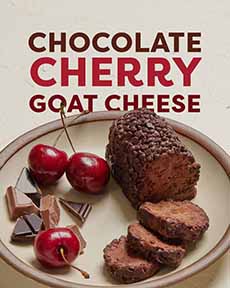
[1] Oh, how delicious—we could eat the whole thing: Chocolate Cherry Goat Cheese (all photos © Vermont Creamery).
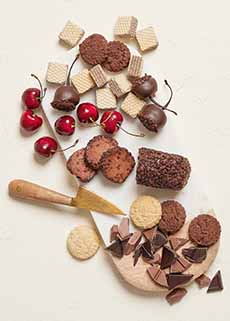
[2] Serve it as a dessert spread with cookies.
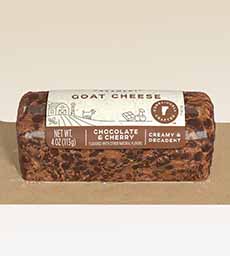
[3] The package is just 4 ounces. You’ll want several!

[4] An Alpine goat, whose milk contributes to the cheeses at Vermont Creamery.
|
In 1493, Columbus brought goats to the Americas. In the 1590s, settlers to the continent brought Swiss breeds along with Spanish and Austrian goats.
A 1630 census of Jamestown lists goats as one of the most valuable assets!
Goats were brought to the southwestern U.S. in the 17th century by early Spanish explorers and clergy. These goats are the ancestors of the Spanish goats of Texas and the Lamancha breed of California.
Other European settlers also brought their goat breeds to the U.S. as they moved into the eastern U.S. in the 18th century.
The early 1900s was a period of explosive growth in the number of dairy goats being brought into the U.S.
Goat popularity surged following the Louisiana Purchase Exposition (a.k.a. the 1904 World’s Fair in St. Louis), where the first dairy goat show in America was held.
Most popular there was an exhibit of 300 Angora goats. Their appearance, with curly, heavy hair, drew hundreds of fans to the Louisana Purchase Exposition.
As a plus, goats are also used for vegetation management in certain areas—including ours—as their “eat anything” grazing habits help control unwanted vegetation that is too difficult for man or machine to remove.
According to the USDA, as of 2022, there were 2.55 million goats in the U.S., representing 200 different breeds.
There are approximately 450 million goats worldwide.
Goats are members of the Bovidae family, which also includes antelope, buffalo, cattle, and sheep.
Goats are herbivores (they only eat vegetation). They are ruminants, and like cattle, they have four stomach compartments [source].
__________________
*The “Fertile Crescent” or “cradle of civilization,” are names given to the land between the Tigris and Euphrates Rivers. It was the original area for much cultivation of essential crops. Today, the area includes modern Iraq, northeastern Syria, southeastern Turkey, and southwestern Iran.
†Pastoral societies are nomadic or semi-nomadic and rely heavily on herds of domesticated animals for food, labor, and trade.
CHECK OUT WHAT’S HAPPENING ON OUR HOME PAGE, THENIBBLE.COM.
|
